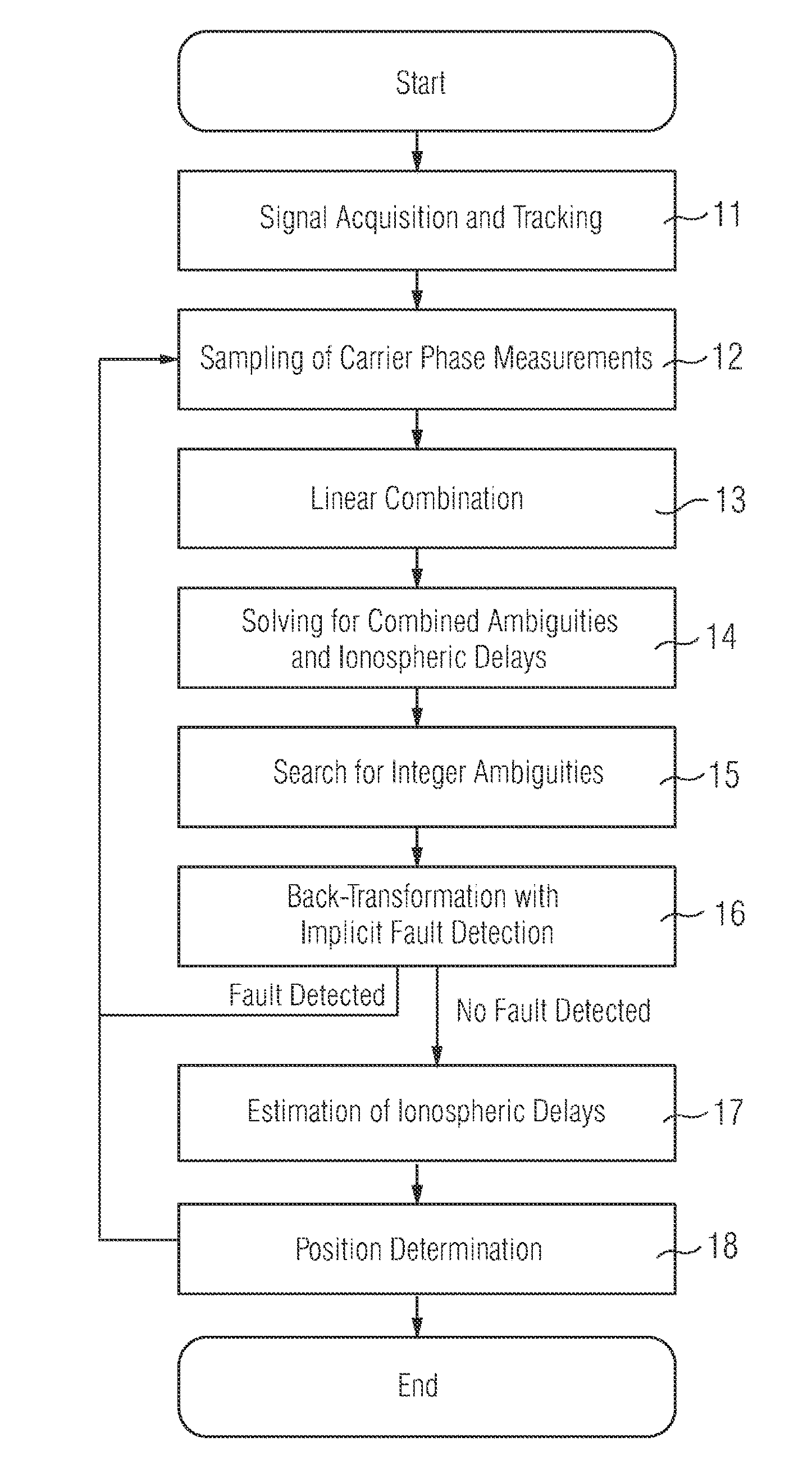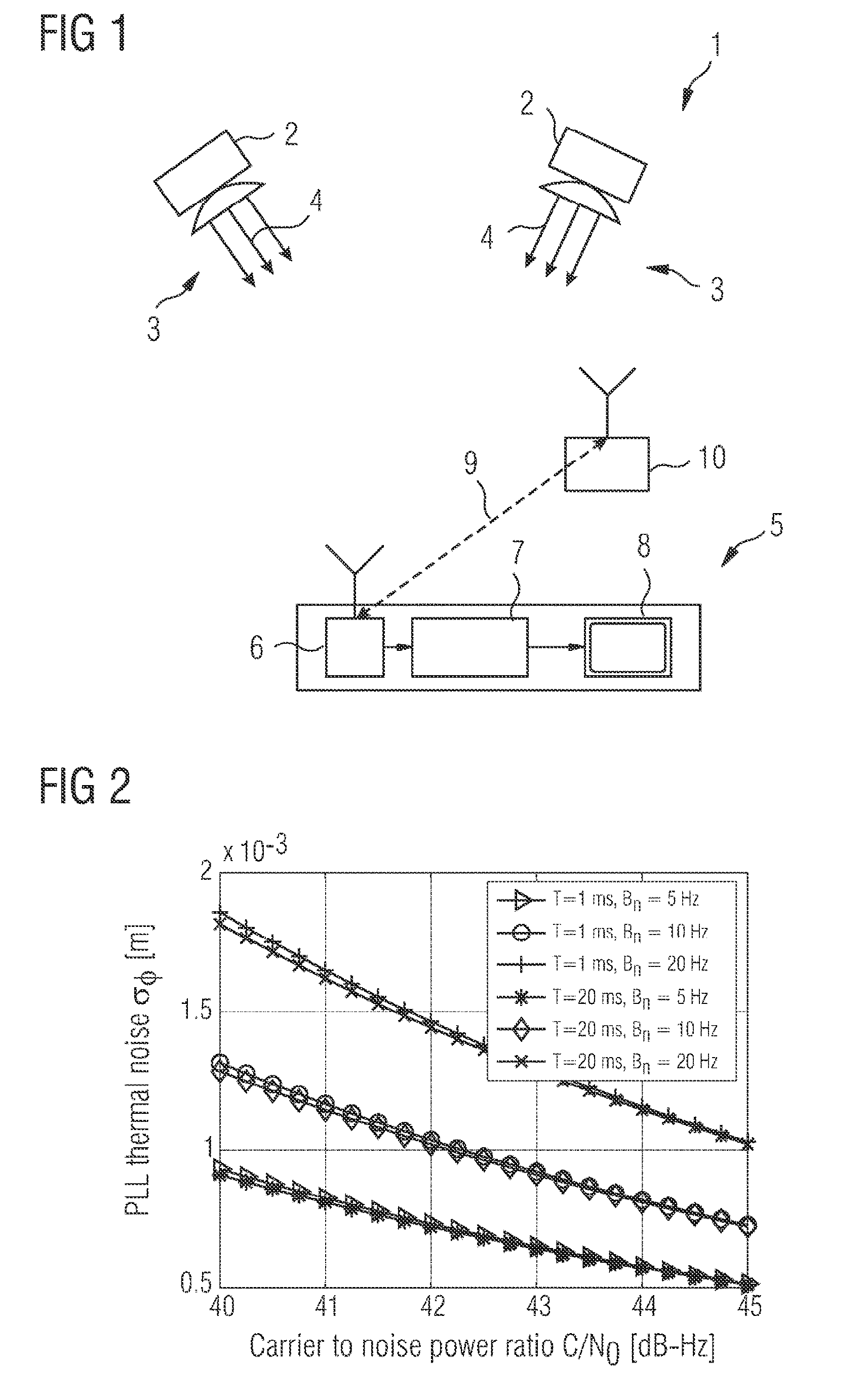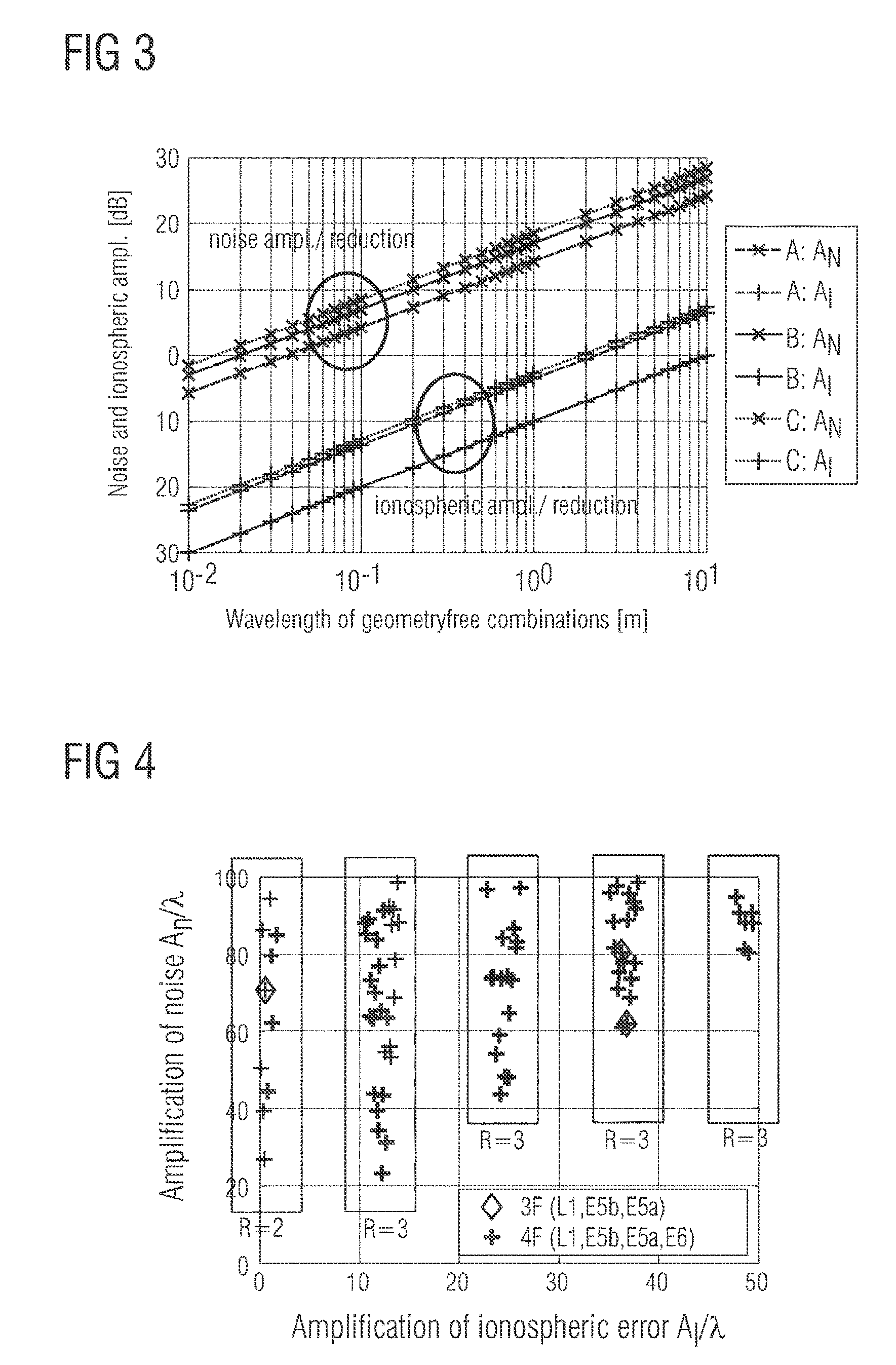Method for processing a set of signals of a global navigation satellite system with at least three carriers
a global navigation satellite and signal processing technology, applied in satellite radio beaconing, measurement devices, instruments, etc., can solve the problems of carrier signals showing so-called ionospheric errors, significant attenuation of ionospheric and tropospheric errors, and ambiguity of phase, so as to minimize the probability of non-detection, minimize the maximum variance, and reduce the probability of erroneous estimation
- Summary
- Abstract
- Description
- Claims
- Application Information
AI Technical Summary
Benefits of technology
Problems solved by technology
Method used
Image
Examples
Embodiment Construction
[0048]FIG. 1 shows a global navigation satellite system 1 which comprises satellites 2 orbiting around the earth and emitting navigation signals 3 modulated on a number of carrier signal 4.
[0049]A navigation device 5 comprises a receiver 6 which is connected to a signal processor 7. The signal processor 7 processes the navigation signal 3 received from the satellites 2 and display the results on a display 8 of the navigation device 5.
[0050]For determining the position of the navigation device 5 various methods can be used. In the double difference method the length d of a baseline vector 9 between the navigation device 5 and a reference station 10 is determined by considering the differences between current difference signals from different satellites 2, whereas the difference signals are formed by the differences between the signals emitted by a specific satellite 2 but received from the navigation device 5 and the reference station 10. The distance between the navigation device 3 ...
PUM
 Login to View More
Login to View More Abstract
Description
Claims
Application Information
 Login to View More
Login to View More - R&D
- Intellectual Property
- Life Sciences
- Materials
- Tech Scout
- Unparalleled Data Quality
- Higher Quality Content
- 60% Fewer Hallucinations
Browse by: Latest US Patents, China's latest patents, Technical Efficacy Thesaurus, Application Domain, Technology Topic, Popular Technical Reports.
© 2025 PatSnap. All rights reserved.Legal|Privacy policy|Modern Slavery Act Transparency Statement|Sitemap|About US| Contact US: help@patsnap.com



